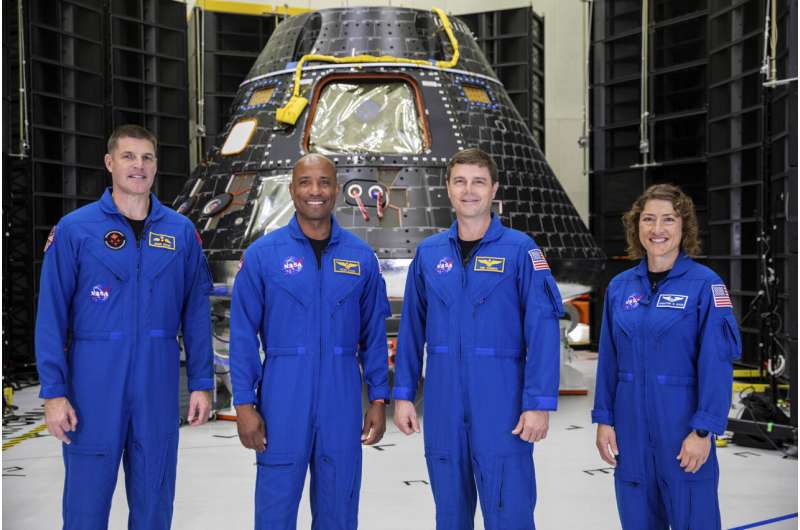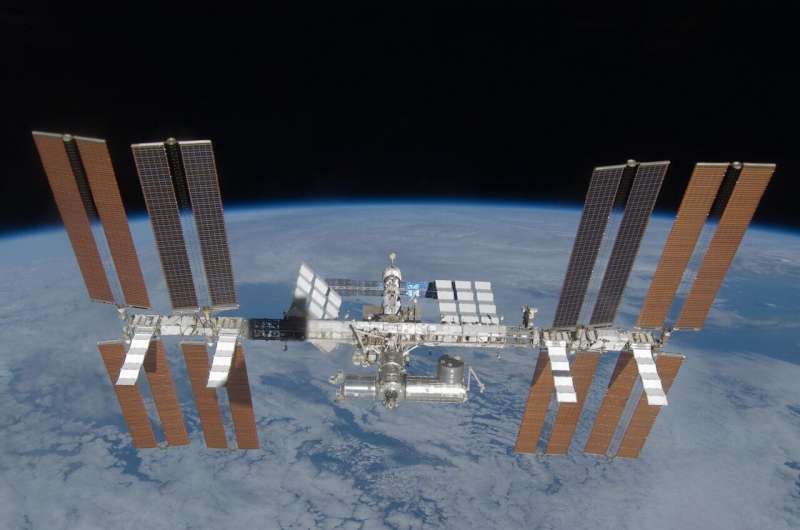Astronauts get first look at the spacecraft that will fly them around the moon
Wednesday, 09 August 2023 07:11
NRO seeks collaboration with industry and academia
Wednesday, 09 August 2023 03:19
The National Reconnaissance Office is looking for partners who are developing advanced technology for satellites and ground systems.
The post NRO seeks collaboration with industry and academia appeared first on SpaceNews.
Artemis II crew inspect Orion capsule with media in tow
Tuesday, 08 August 2023 23:33 Earlier today, journalists from all over the world got to meet the Artemis II Crew and their Orion Crew Module, which will send them on a journey around the Moon and back to earth no earlier than November 2024.
Displayed inside the Neil Armstrong Operations and Checkout Building (O&C) at NASA's Kennedy Space Center in Florida are the Orion Crew Modules for Artemis II, Artemis III, Artemis
Earlier today, journalists from all over the world got to meet the Artemis II Crew and their Orion Crew Module, which will send them on a journey around the Moon and back to earth no earlier than November 2024.
Displayed inside the Neil Armstrong Operations and Checkout Building (O&C) at NASA's Kennedy Space Center in Florida are the Orion Crew Modules for Artemis II, Artemis III, Artemis NASA may delay crewed lunar landing beyond Artemis 3 mission
Tuesday, 08 August 2023 23:33 NASA's Artemis 3 mission, set to return humans to the Moon in 2025, might not involve a crewed landing after all, an official said Tuesday.
Jim Free, the space agency's associate administrator for the Exploration Systems Development Mission Directorate, told reporters in a briefing that certain key elements would have to be in place - notably the landing system that is being developed by Sp
NASA's Artemis 3 mission, set to return humans to the Moon in 2025, might not involve a crewed landing after all, an official said Tuesday.
Jim Free, the space agency's associate administrator for the Exploration Systems Development Mission Directorate, told reporters in a briefing that certain key elements would have to be in place - notably the landing system that is being developed by Sp Chemical contamination on International Space Station is out of this world, study shows
Tuesday, 08 August 2023 22:00
Concentrations of potentially harmful chemical compounds in dust collected from air filtration systems on the International Space Station (ISS) exceed those found in floor dust from many American homes, a new study reveals.
In the first study of its kind, scientists analyzed a sample of dust from air filters within the ISS and found levels of organic contaminants which were higher than the median values found in US and Western European homes.
Publishing their results in Environmental Science & Technology Letters, researchers from the University of Birmingham, UK, as well as the NASA Glenn Research Center, U.S., say their findings could guide the design and construction of future spacecraft.
Contaminants found in the "space dust" included polybrominated diphenyl ethers (PBDEs), hexabromocyclododecane (HBCDD), "novel" brominated flame retardants (BFRs), organophosphate esters (OPEs), polycyclic aromatic hydrocarbons (PAH), perfluoroalkyl substances (PFAS), and polychlorinated biphenyls (PCBs).
BFRs and OPEs are used in many countries to meet fire safety regulations in consumer and commercial applications like electrical and electronic equipment, building insulation, furniture fabrics and foams.
PAH are present in hydrocarbon fuels and emitted from combustion processes, PCBs were used in building and window sealants and in electrical equipment as dielectric fluids, while PFAS have been used in applications like stain proofing agents for fabrics and clothing.
GHGSat orders four more greenhouse gas monitoring cubesats from Spire
Tuesday, 08 August 2023 20:49
GHGSat has ordered another four 16U cubesats from Spire Global for a launch no earlier than 2024 to expand its greenhouse gas-monitoring constellation, the Canadian satellite operator announced Aug.
Redwire to supply cameras for True Anomaly’s inspector satellites
Tuesday, 08 August 2023 18:14
True Anomaly, a startup based in Denver, will install Redwire’s navigation and sensing cameras on two inspector satellites it plans to launch next year.
Starfish Space wins Air Force contract to develop satellite guidance software
Tuesday, 08 August 2023 17:41
Starfish Space has secured $1.8 million from the U.S. Air Force’s AFWERX technology accelerator to develop its satellite guidance software, the in-orbit servicing startup announced Aug.
U.S. commission to investigate China’s remote-sensing technologies
Tuesday, 08 August 2023 17:20
NRO to conduct responsive space mission with Firefly and Xtenti
Tuesday, 08 August 2023 17:09
The National Reconnaissance Office announced a contract Aug. 8 with Firefly Aerospace and Xtenti, a Texas-based space logistics startup, for a responsive space mission.
NOAA lifts many commercial remote sensing license conditions
Tuesday, 08 August 2023 16:45
The agency that regulates commercial remote sensing satellite systems has loosened restrictions imposed on many companies’ licenses, enabling them to provide higher-resolution imagery or other services.
China could be planning a second broadband megaconstellation
Tuesday, 08 August 2023 16:04
The Shanghai government has expressed backing for a "G60 Starlink" broadband megaconstellation consisting of an initial 1,296 satellites.
ReOrbit: autonomous and inter-networking satellites for data flow needs in space. What, Why, How
Tuesday, 08 August 2023 15:53
When designing satellites, ReOrbit puts software in the spotlight. What is the rationale behind that approach? Typically, following the initial evolution of technology, you can see a prevailing pattern of […]
Exotrail establishes U.S. presence
Tuesday, 08 August 2023 14:40
French space mobility company Exotrail has created two U.S. subsidiaries as part of efforts to serve a growing number of American customers.
Download your Tuesday ‘News from the 2023 Small Satellite show’ digital edition
Tuesday, 08 August 2023 14:19
The SpaceNews editorial team is producing a daily for the 2023 Small Satellite show, a nightly email newsletter and all-day web coverage during the 2023 Small Satellite show in Logan, Utah, the […]
